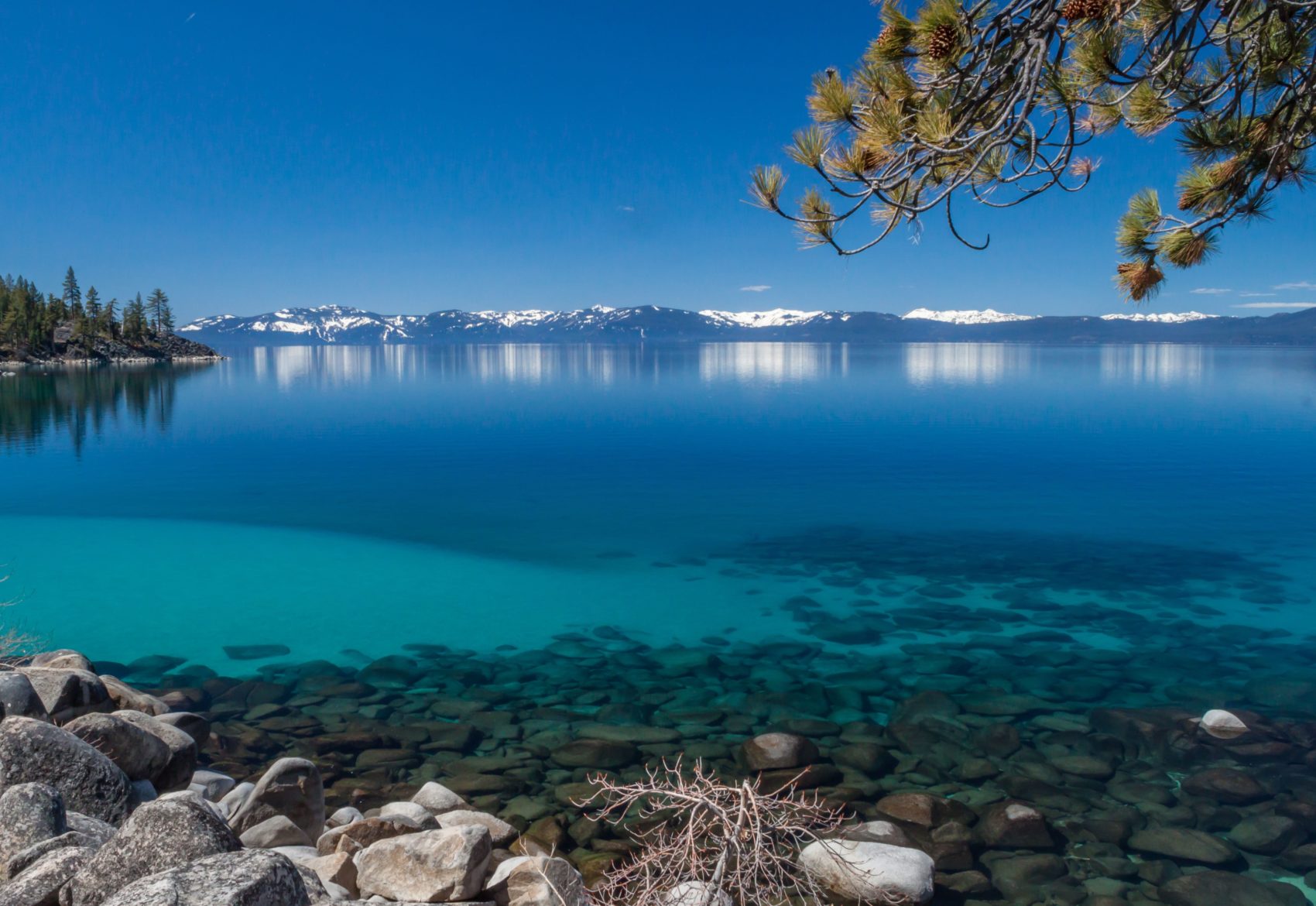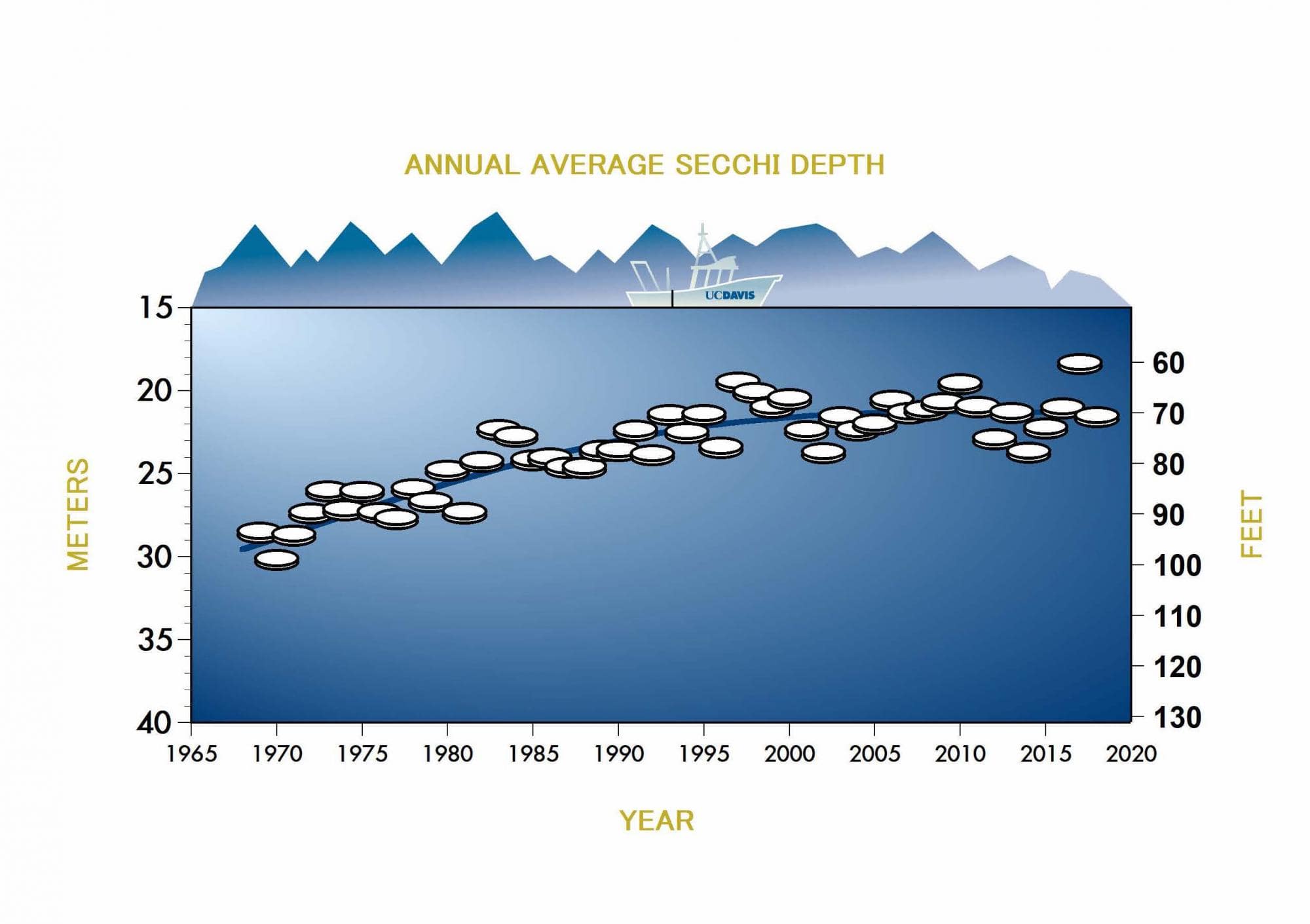
Lake Tahoe’s legendary water clarity improved in 2018 thanks to a return to more normal weather and streamflow conditions, according to a report. The annual report by UC Davis researchers found the average clarity level in 2018 improved dramatically to 70.9 feet, a 10.5-foot increase from 2017.
Two years ago clarity dropped to a record low, partially due to record-breaking precipitation and unusually warm lake temperatures. Clarity is measured as the depth to which a 10-inch white disk, called a Secchi disk, remains visible when lowered into the water. In 2018, 26 individual Secchi depth readings were taken from January through December.

Clarity is typically lowest in the summer after spring runoff brings fine sediment particles and nutrients to the lake, and warmer temperatures and more sunlight stimulate algae growth, and best in fall and winter. The mean summer (June-September) clarity value was 61.7 feet. The winter (December to March) average was 73.5 feet, with one reading in March measuring more than 100 feet. The lowest value was 50 feet in July 2018.
“In 2018, Lake Tahoe’s clarity regained the expected seasonal patterns that were disrupted by the extreme conditions of the previous year,” Geoffrey Schladow, the director of the Tahoe Environmental Research Center and a professor of engineering at UC Davis, said in a statement. “Clarity was expectedly at its lowest point in summer, and winter and fall had the highest values. Devising strategies to improve summer clarity in the long term is a high scientific priority.”
The five-year average lake clarity is currently 70.3 feet, an increase of almost a foot from the previous five-year running average. The Lake’s waters grew murkier from the late 1960s through the early 2000s due to algae growth and the presence of very fine particles, writes SF Gate. In the past decade, the rate of deterioration has lessened as public and private groups find ways to reduce stormwater pollution from roads and urban areas. Restoring meadows can filter out sediment from the runoff before it pours into the lake, according to the UC Davis study.